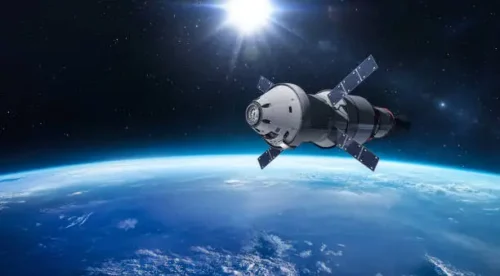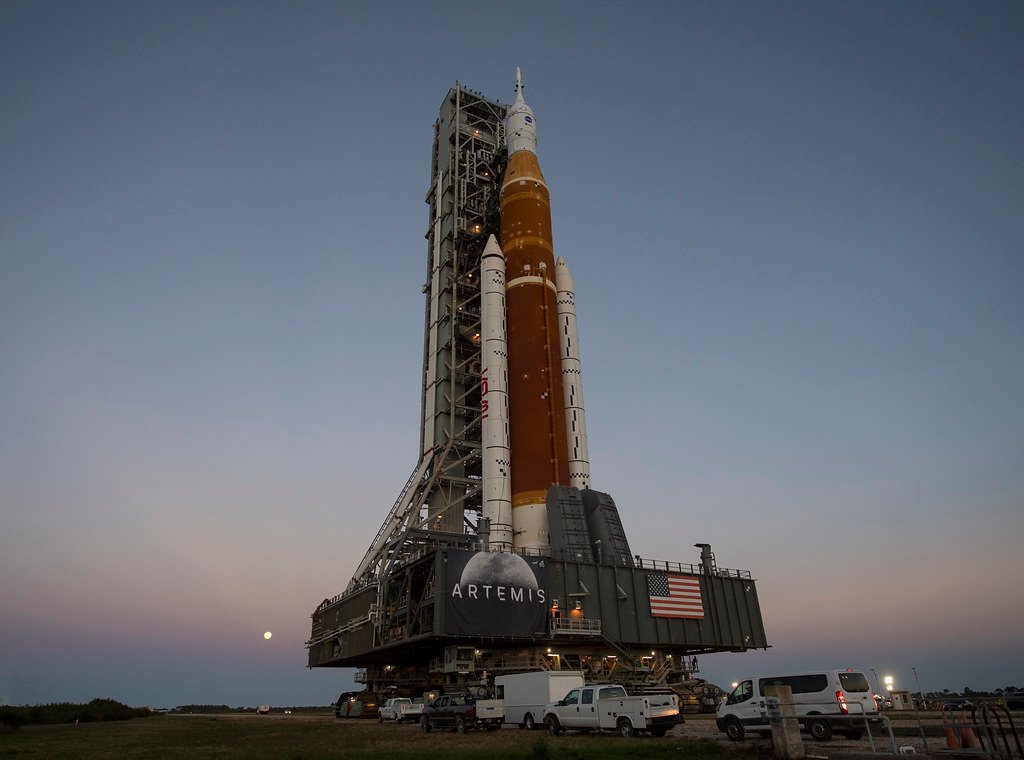Table of Contents
A Decisive Step Towar Lunar Exploration
On November 16, 2022, NASA successfully launched the Artemis I mission, officially marking the beginning of a new era in space exploration and aerospace engineering. This mission was the first integrated test of the Space Launch System (SLS) rocket and the Orion spacecraft, designed to return humans to the Moon and, in the future, push even farther — toward Mars.
Mission Objectives of Artemis I
Artemis I was the first in a series of increasingly complex missions and was conducted without a crew, laying the engineering foundation for future crewed missions. The fundamental goal was to verify the performance of the SLS (Space Launch System) rocket and the Orion spacecraft on a journey around the Moon and back. The main objectives included:
- Testing the propulsion and navigation systems under real spaceflight conditions.
- Verifying the resilience of Orion’s thermal protection system (heat shield) during re-entry into Earth’s atmosphere.
- Evaluating communication and safety systems before placing astronauts on board for future missions.
This mission represented a crucial milestone in aerospace engineering, as it integrated multiple high-complexity subsystems into one coherent flight test, advancing the field of space systems design and deep space exploration technologies
The Journey of Artemis I
After launching from the Kennedy Space Center, Artemis I traveled more than 1.4 million miles (over 2 million kilometers) in a 25-day mission, performing a distant retrograde orbit around the Moon. The Orion capsule reached an altitude of approximately 81 miles (130 kilometers) above the lunar surface before returning to Earth, where it splashed down safely in the Pacific Ocean.
The Success of Artemis I
Since the 2022 flight, NASA engineers and aerospace experts have extensively analyzed the data collected during the mission. Here’s a summary of the key engineering achievements:
- Integrated Testing of Deep Space Exploration Systems: Artemis I successfully demonstrated the integration of the SLS rocket, the Orion spacecraft, and ground systems, confirming readiness for future crewed lunar missions. This was a major systems engineering accomplishment, showcasing the ability to coordinate complex aerospace components.
- SLS Rocket Performance: The SLS rocket performed as designed, carrying the Orion spacecraft into a distant retrograde orbit around the Moon. This confirmed the rocket’s heavy-lift capabilities, crucial for deep space missions and high-mass payload delivery.
- Orion Spacecraft Behavior: Orion completed a journey of over 1.4 million miles, reaching approximately 270,000 miles beyond the Moon. It passed all key tests, including the evaluation of its thermal protection system during atmospheric re-entry — a critical engineering test for astronaut safety.
- International Collaboration: The mission involved international partners, including the European Space Agency (ESA), the Japan Aerospace Exploration Agency (JAXA), the Italian Space Agency, and the Israel Space Agency, highlighting the importance of global cooperation in aerospace engineering and space exploration.
- Data Collection for Future Missions: The data gathered during Artemis I was fundamental for identifying and resolving technical issues, such as those related to Orion’s heat shield. These insights are essential for improving the safety and engineering reliability of future crewed missions.
Final Thoughts
Artemis I was not just a symbolic mission; it was a sophisticated engineering achievement that paved the way for the next phase of human space exploration. Through the integration of cutting-edge aerospace technologies, advanced materials, propulsion innovations, and high-reliability systems, Artemis I validated the complex design work of thousands of engineers, scientists, and technicians worldwide.
Moreover, this mission has provided a wealth of data that will fuel future improvements, from refining spacecraft durability to enhancing navigation precision and life support systems. For the aerospace engineering community, Artemis I stands as a testament to what can be accomplished when international collaboration, technological innovation, and ambitious human goals come together.
In conclusion, Artemis I was a decisive step forward, proving that the engineering capabilities needed to explore the Moon — and eventually Mars — are not just theoretical but operational. As we move toward Artemis II and beyond, the knowledge gained from this mission will guide the next generation of explorers, engineers, and space scientists, ensuring that humanity’s journey into deep space continues with strength, safety, and innovation.


